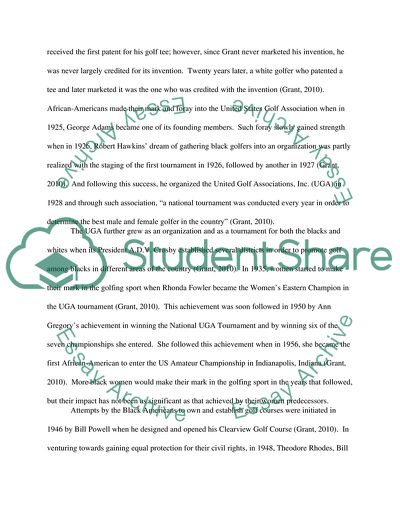Cite this document
(Segregation in Golf Research Paper Example | Topics and Well Written Essays - 3000 words, n.d.)
Segregation in Golf Research Paper Example | Topics and Well Written Essays - 3000 words. Retrieved from https://studentshare.org/sports-and-recreation/1735764-segregation-in-golf
Segregation in Golf Research Paper Example | Topics and Well Written Essays - 3000 words. Retrieved from https://studentshare.org/sports-and-recreation/1735764-segregation-in-golf
(Segregation in Golf Research Paper Example | Topics and Well Written Essays - 3000 Words)
Segregation in Golf Research Paper Example | Topics and Well Written Essays - 3000 Words. https://studentshare.org/sports-and-recreation/1735764-segregation-in-golf.
Segregation in Golf Research Paper Example | Topics and Well Written Essays - 3000 Words. https://studentshare.org/sports-and-recreation/1735764-segregation-in-golf.
“Segregation in Golf Research Paper Example | Topics and Well Written Essays - 3000 Words”, n.d. https://studentshare.org/sports-and-recreation/1735764-segregation-in-golf.


